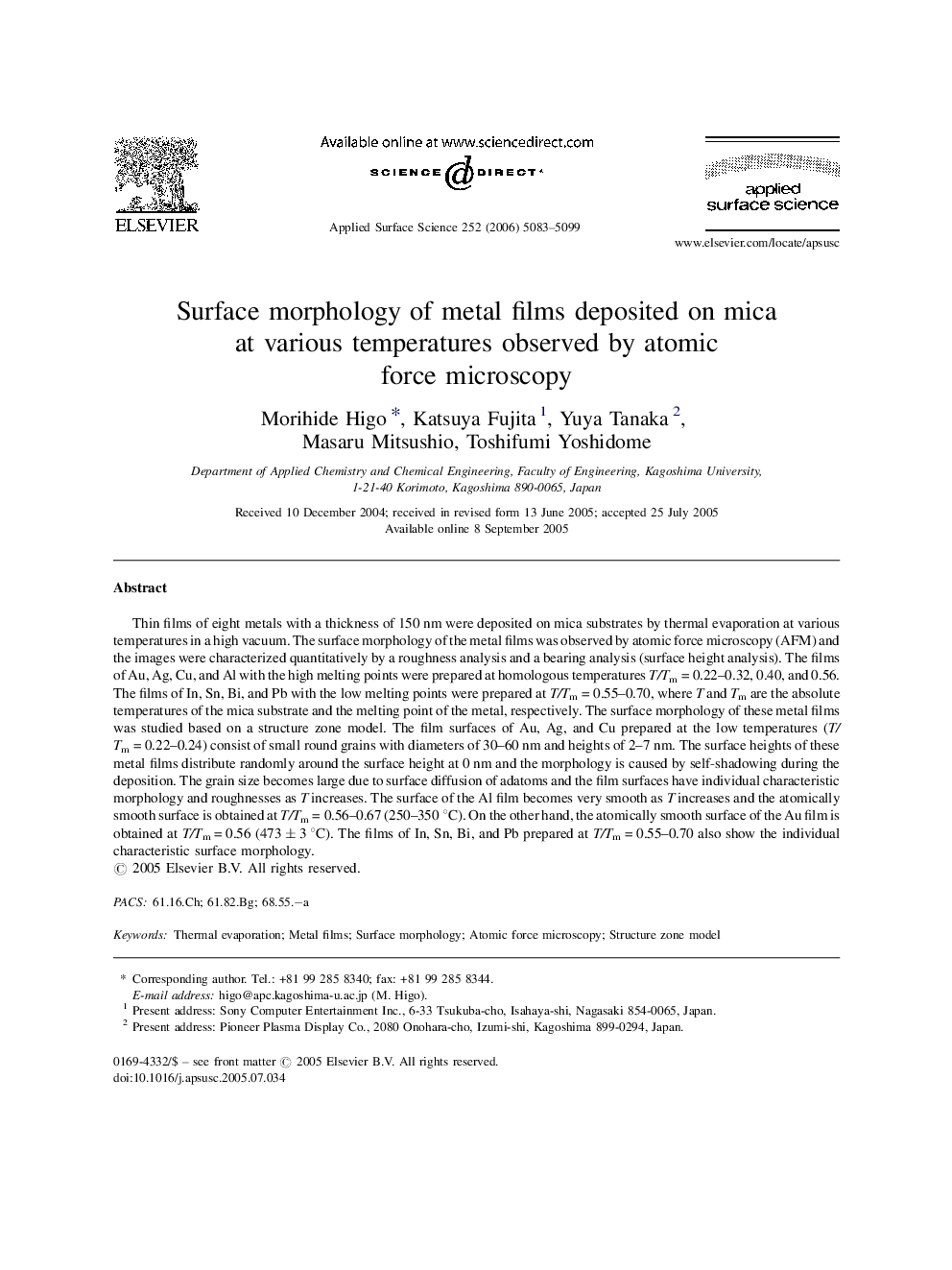| Article ID | Journal | Published Year | Pages | File Type |
|---|---|---|---|---|
| 5369110 | Applied Surface Science | 2006 | 17 Pages |
Thin films of eight metals with a thickness of 150 nm were deposited on mica substrates by thermal evaporation at various temperatures in a high vacuum. The surface morphology of the metal films was observed by atomic force microscopy (AFM) and the images were characterized quantitatively by a roughness analysis and a bearing analysis (surface height analysis). The films of Au, Ag, Cu, and Al with the high melting points were prepared at homologous temperatures T/Tm = 0.22-0.32, 0.40, and 0.56. The films of In, Sn, Bi, and Pb with the low melting points were prepared at T/Tm = 0.55-0.70, where T and Tm are the absolute temperatures of the mica substrate and the melting point of the metal, respectively. The surface morphology of these metal films was studied based on a structure zone model. The film surfaces of Au, Ag, and Cu prepared at the low temperatures (T/Tm = 0.22-0.24) consist of small round grains with diameters of 30-60 nm and heights of 2-7 nm. The surface heights of these metal films distribute randomly around the surface height at 0 nm and the morphology is caused by self-shadowing during the deposition. The grain size becomes large due to surface diffusion of adatoms and the film surfaces have individual characteristic morphology and roughnesses as T increases. The surface of the Al film becomes very smooth as T increases and the atomically smooth surface is obtained at T/Tm = 0.56-0.67 (250-350 °C). On the other hand, the atomically smooth surface of the Au film is obtained at T/Tm = 0.56 (473 ± 3 °C). The films of In, Sn, Bi, and Pb prepared at T/Tm = 0.55-0.70 also show the individual characteristic surface morphology.
